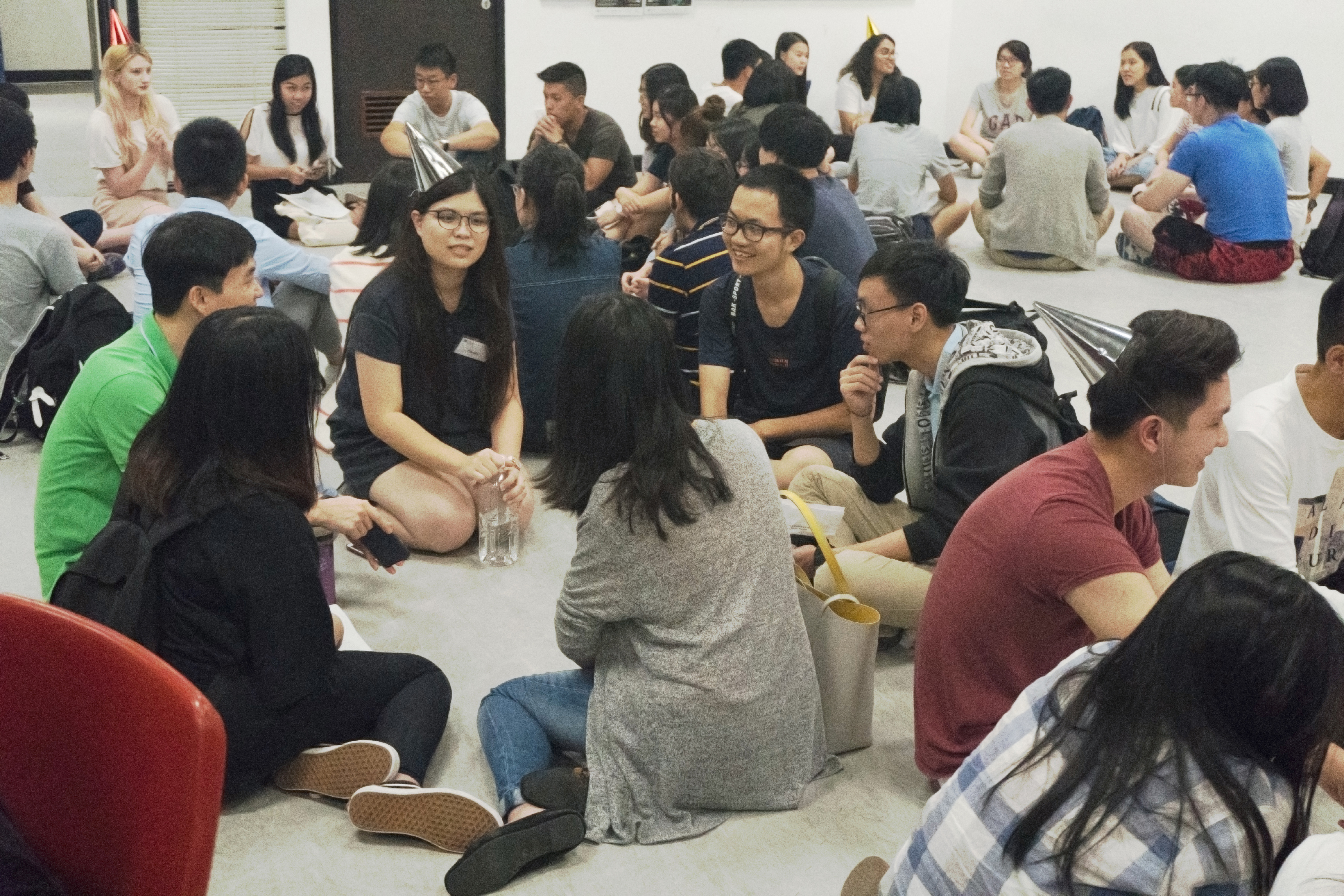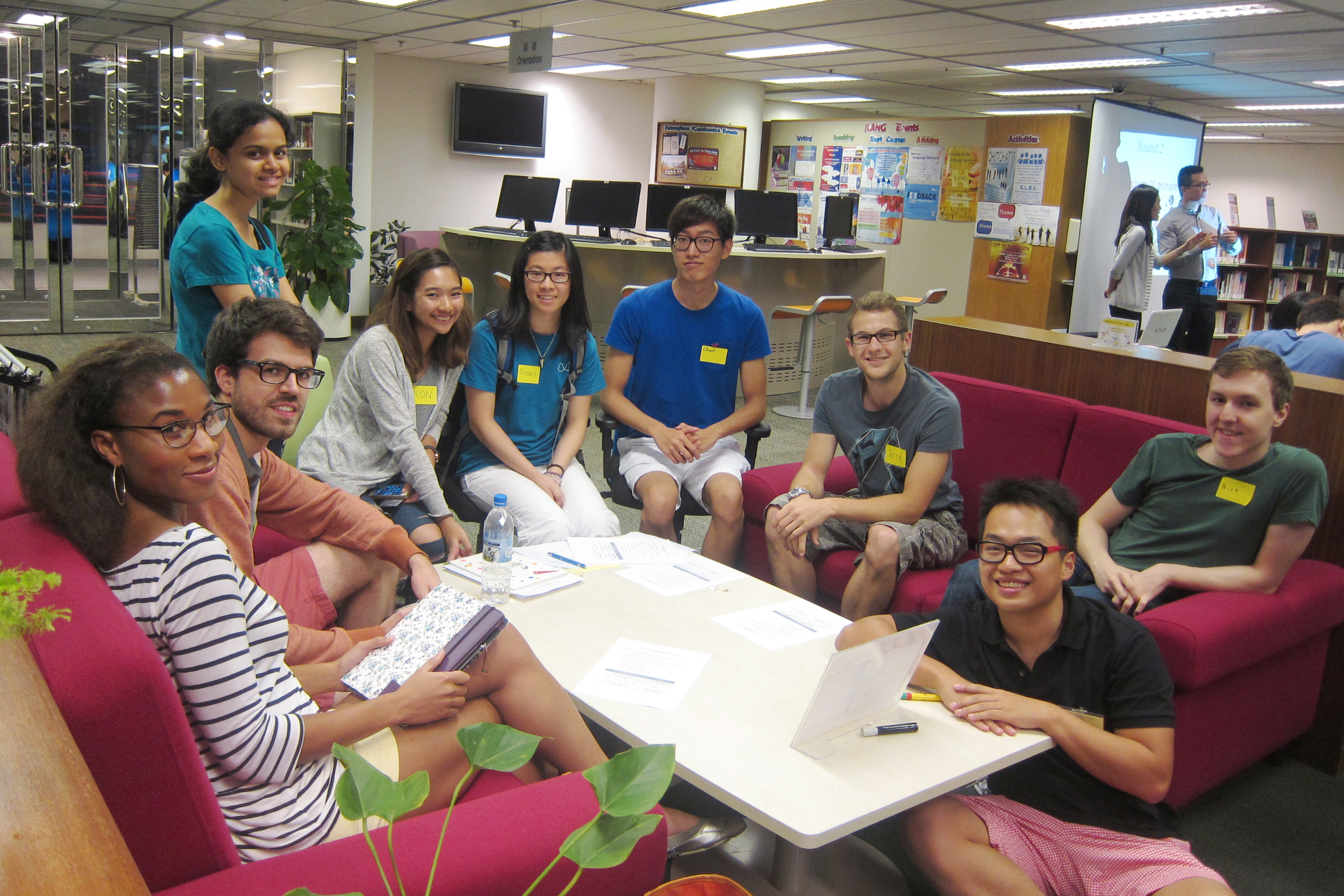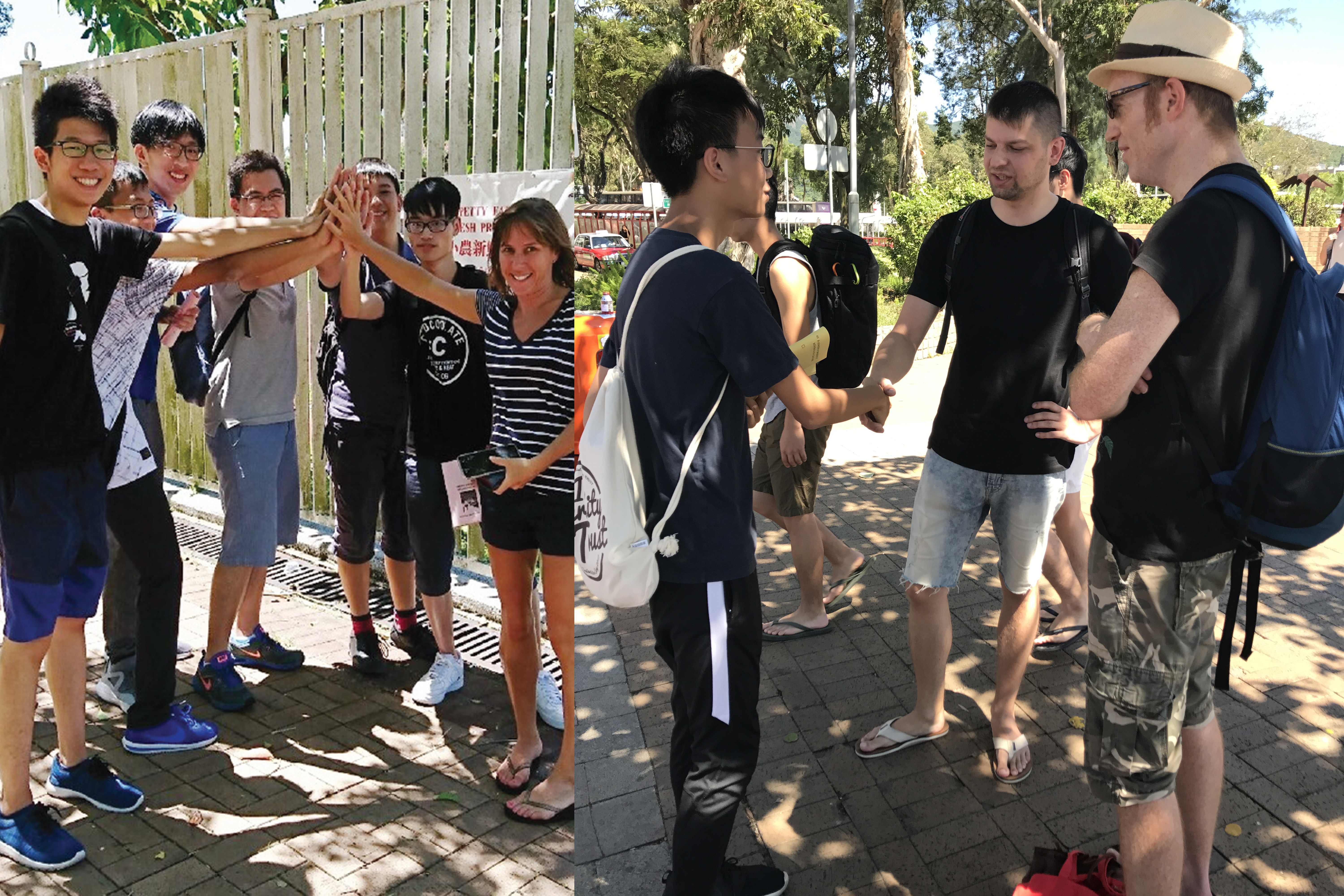Internationalising Language Studies: Do not be that Goldfish in this Global Classroom
By Nicole Lai
“I taught them what the difference between an observation and a judgment is. Yet, when I make comments on a person’s behaviour, is it a judgment or an observation? If I want to be more interculturally competent, I need to make more observations but not judgments” Ms. Melissa Megan said.
Recognising the importance of equipping students’ intercultural competence for the future work environment, Ms. Melissa Megan, a HKUST-affiliated member, is dedicated to exploring opportunities to bring in different cultural perspectives to the classroom. She made use of the goldfish analogy to explain that we are like a fish in a bowl which doesn’t know it is surrounded by water until it goes outside and see. Similarly, we are surrounded by our cultural norms and values that make it impossible for us to see that our perceived truths may not be universal truths. Only by stepping out of our norms can we have a better understanding of the diversity around us.
Intercultural Learning Environment
Ms. Megan is the course coordinator of a compulsory English course, LANG 1003 English for University Studies II, for all first-year students. When designing the course, her focus was not only on developing students’ language proficiency, but also on building their intercultural competence. This large enrolment course of 2000 students of different cultural backgrounds, learning experience, and proficiency levels could provide an intercultural context as a background for discussion. Additionally, the 40 instructors responsible for teaching the same course could add more perspectives as they facilitate intercultural learning and interactions in class. In short, the course nature created a good opportunity to maximise teacher-student interactions and bring in different cultural perspectives for students to develop knowledge and understanding of diversity.
Rethinking Cultural Norms
Ms. Megan fused the idea of appreciating cultures and differences into her course to create a great platform for students to turn certain universal topics, such as the themes of ‘Beauty’ and ‘Happiness’, into some thought-provoking issues to rethink the ‘norms’. Ms. Megan leveraged discussions with worldwide reading materials and videos to guide students on their way to discover and appreciate cultural phenomena that had never been thought of.
The World Map of Happiness was an example used to guide students in exploring how happiness is defined in different parts of the world. When discussing the drop of ranking of Bhutan from the top eight happiest country to eighty-three in 7 years, the instructors led the students to take a deeper approach and investigate the change and underlying causes through different perspectives. Just as happiness means different things to different people, so too beauty is in the eye of the beholder. Videos were shown to illustrate beauty in different cultures that can be different from our norms. For example, the Mauritanians interpret women of larger sizes as more beautiful and male beauty can be seen through the undergoing of cosmetic surgery in South Korea. Students were provided with these ‘new’ perceptions to re-think their existing cultural beliefs throughout the semester. According to Ms. Megan, this kind of learning experience designed for students was to allow them to learn, observe, discuss and embrace diversity while trying not to judge.
Incorporating Intercultural Learning into Assessments
To stimulate more learning and discussion on universal ideas from different cultural perspectives, Ms. Megan designed assessments, an argumentative essay and a 2-minute persuasive talk, that encouraged students to take the initiative to explore diversity and enhance their cultural sensibility.
Students were given a certain degree of free rein to research into a global issue of their interest and develop their own theses within the topic of the semester. Such learning autonomy enabled students to read widely and develop language skills as they study closely on a culture that they are interested in. What’s more, giving students the autonomy to work on something genuine could be unexpectedly rewarding to students and instructors as it empowers learners with the increased ownership. It could be an important step to engage students in their process of developing intercultural competence.
Acknowledging the fact that language proficiency and prior learning patterns are also part of the culture that students bring into the classroom, a 2-minute persuasive talk was designed as one of the assessments that would bring students from diverse backgrounds together. Students were required to give a persuasive talk in groups of four or five, about an idea to promote happiness in Hong Kong or across the world. Ms. Megan would consider students’ cultural backgrounds and language proficiency when she formed groups for students at the end of the semester. It is hoped that more intercultural interactions can be encouraged among students and through their exchange of ideas, they could explore multiple perspectives. This task also fostered students’ confidence in terms of how to present themselves as an individual. The task helped to promote interactions and boost confidence among a diverse group of students.
Beyond the Classroom
Ms. Megan also sees co-curriculum learning as a valuable learning opportunity to complement classroom learning and develop students’ intercultural competence. Both local and international students, by joining or organising informal activities, can learn to communicate better with each other, reflect on the cultural diversity, and embrace the differences on a diverse campus.
Ms. Megan also shared how the Informal Curriculum for Language Learning (iLANG), initiated by The Centre of Language Education, actively engages students and staff from diverse backgrounds in interacting with each other through activities and courses. With a good mix of learners, iLANG fuses the elements of intercultural communication into the courses and enables learners to learn closely together. Among the courses, Ms. Megan is truly impressed with how the conversation groups in the third language courses create a microcosm of internationalisation of the University where learners have the opportunities not only to enhance their language proficiency but also to develop their skills in intercultural communication. The iLANG also provides opportunities for both local and international students to interact with each other through different informal activities such as fishing, cooking and hiking. As students from different cultural backgrounds would take turns to be mentors and organise activities, it provides a platform where students can bring in their own cultures and facilitate activities in diverse settings. These interactions enable students to truly understand, foster effective communication with each other, and know that different cultures can coexist.
Intercultural competence is now a highly sought-after quality in an increasingly internationalised workplace. It is essential for our students to develop such competence as it would equip them with: (1) the ability to deal with globalisation and (2) the building of self-confidence. In today’s interdependent global context, students have to learn to be globally engaged by developing intercultural competence and multiple worldviews. It is encouraged that students should get to know about the world; understand the diversity; appreciate different opinions; and embrace different cultures.
Acknowledgments
The feature story draws on an interview with Ms. Melissa Megan who generously shared with us her experiences and insights, and we hope we have done justice to the wisdom of her practice in the internationalisation of teaching and learning.
Cite this item
Lai, N. (2019, May). Internationalising Language Studies: Do not be that Goldfish in this Global Classroom. CoP – ITL Buzz, 6. Retrieved from https://www4.talic.hku.hk/cop-itl/whats-happening/enewsletters/issue-06/do-not-be-that-goldfish-in-this-global-classroom/.




